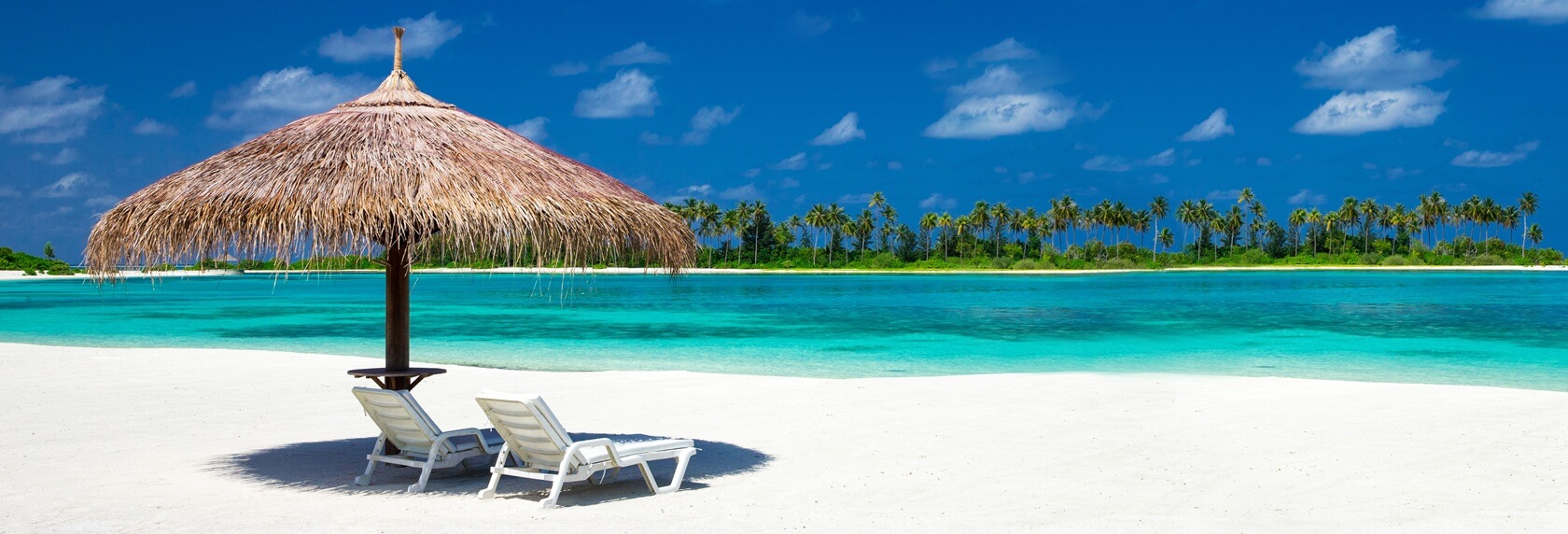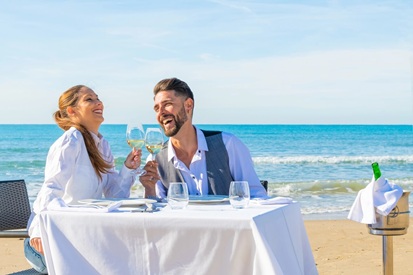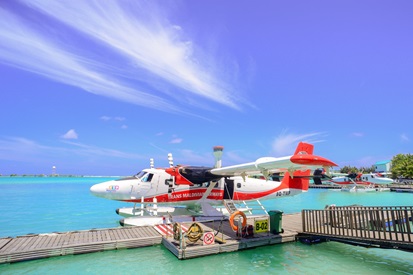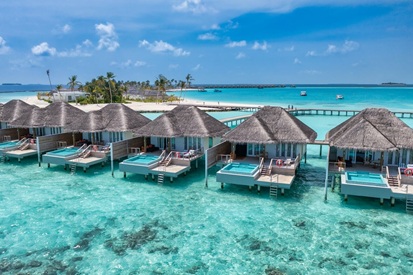

For many, the Maldives is synonymous with crystal clear waters, white sandy beaches and luxurious overwater villas. But beyond the high-end resorts and picturesque shores, the Maldives offers a diverse landscape and ecosystem that includes dense jungles, mangrove forests, coral reefs and secluded locations that attract active and curious travelers.
In this article, we will look at some of the best places to experience the stunning nature of the Maldives.

Depositphotos
1. Huraa Mangrove Nature Reserve
Mangroves are an important part of the Maldives ecosystem. They act as a buffer between the ocean and the land and are home to a wide range of fauna. Huraa Island, located in the Kaafu Atoll, is a popular destination for eco-tours and offers a great opportunity to explore a mangrove forest that covers an area of over 5 hectares.
A mangrove tour is both educational and scenic, allowing travelers to understand the importance of these ecosystems. The calm waters surrounding the mangroves are ideal for kayaking or small boating. You will be able to see crabs, fish, and other sea creatures hiding among the roots.
Another feature of the island is its rich avifauna, including rare species of birds, which makes it attractive for ornithologists.
In addition to a fascinating journey through the mysterious mangrove thickets, the excursion program may include a walking tour of the island, during which you can immerse yourself in the local color, communicate with friendly residents and try authentic dishes. And if you are lucky, you will meet a pod of playful dolphins cutting through the sea.
The proximity to Velana International Airport makes Huraa Island easily accessible for tourists.

Depositphotos
2. Mathikilhi Eco Garden
Situated in the Hulhumeedhoo area of Addu Atoll, the Mathikilhi Eco-Garden is a wonderful example of sustainable tourism and conservation. A large part of its area is occupied by a lake, with most of the remaining space covered by a rich blanket of wetland vegetation.
There is an incredible diversity of flora and fauna here. However, the main highlight of the eco-garden is the warm, mineral-rich natural mud baths. The territory has paths, benches, arched bridges and small picturesque corners suitable for taking photos or simply immersing yourself in the tranquility of the surrounding environment.

Nishaman Ali
3. Fuvahmulah Island
This island has a number of features that make it stand out from other Maldives. Fuvahmulah is sometimes called the "Galapagos of the Maldives" due to its unique biodiversity. Freshwater lakes and vast wetlands are home to many rare plants and animals found nowhere else in the Maldives.
On the northern tip of the island is Dhadimago Beach, famous for its unusual sand. Locals call it "Thundu" - it is small, smooth and shiny white pebbles. Such sand in the Maldives is found only on Fuvahmulah and is a real natural attraction.
The opposite of Dhadimago Beach is "Kalho-Akiri" - a black pebble beach located on the south-eastern coast of the island and contrasting with the white beaches of other Maldivian islands.
One of the most amazing natural phenomena on Fuvahmulah is considered to be "Bissaweli" - the formation of temporary lagoons by moving sand from the shore to the edge of the reef. Both locals and tourists rush to swim in the clear waters of the "newborn" lagoons.
In addition, every year during the southwest monsoon season, flying fish swim onto the shores of Fuvahmulah. This unusual event arouses great interest among locals, who enjoy catching the fish with their hands.
Apart from its unique natural phenomena, Fuvahmulah is famous for its mango plantations and is the largest producer of mangoes in the Maldives.

Depositphotos
4. Dhigemahkoda Nature Park
Dhigemahkoda Nature Park was created on the wetlands of the south-eastern part of Hoandedhdhoo Island, Gaafu Dhaalu Atoll. The park was created to preserve the wetlands and provide visitors with an opportunity to enjoy the natural beauty of the area. The park has an 85-metre walking path, a viewing platform, benches and barbecue areas.
5. Baarah Wetlands
Baarah Island , located in Haa Alifu Atoll, is home to a natural treasure - a vast mangrove forest. Covering an area of approximately 39 hectares, this wetland is a complex and diverse ecosystem that includes six different types of mangroves.
Mangrove forests play a vital role in maintaining the aquatic ecosystem. They provide shelter for a variety of marine life, such as turtles, rays, young sharks and various species of fish. The dense network of mangrove roots creates ideal conditions for spawning. In addition, mangroves protect the coastline from erosion and act as a natural filter for the water. Many different species of birds, including rare species, as well as several species of reptiles can be found here.
For those who want to get to know the region's nature better, there are several options. Exploring the wetlands by kayak is a great way to enjoy the peace and quiet while observing a variety of birds and other inhabitants of the bush. Hikers can take a tour during which guides will tell you about the local flora and fauna, history and geography of the place. In addition, visitors to the island can join local fishermen and try their hand at traditional fishing.
6. Kaashidhoo Wetlands
Kaashidhoo Island, located approximately 86 kilometers from Male, offers travelers immaculate beaches with fine white sand, as well as the opportunity to explore the archaeological remains of an ancient Buddhist monastery, visit agricultural farms and learn about cultivation methods, taste fresh fruits and vegetables, walk through traditional villages and a host of other exciting activities.
Wildlife enthusiasts can explore the intricate network of mangrove forests that line the island's shores, home to a wide variety of wildlife and birds. The area is also home to over 30 protected black turtles.
7. Thulusdhoo and Maafushi Sandbanks
The Maldives are dotted with secluded sandbanks and uninhabited islands, offering an untouched slice of nature for those seeking tranquility. These sandbanks are ideal for picnics, snorkeling or simply sunbathing. These serene spots are often completely isolated, allowing you to fully appreciate the natural beauty of the Maldives.
Sandbanks near the Thulusdhoo Islands and Maafushi are some of the most popular places to enjoy the stunning beauty of the white sandy shores and azure waters of the Maldives.
For a more exclusive experience, many resorts offer day trips to private islands or uninhabited islets. These Robinson Crusoe-style tours allow you to picnic or sunbathe in complete privacy, surrounded only by ocean and sky.
The Maldives archipelago is a canvas on which nature has created its most vivid and diverse paintings. You should see it for yourself!

Depositphotos
More articles
- Rains in Bali: pros and cons of the wet season
- Hotels of Ayana complex in Bali
- Gunung Batur: how to get to the main volcano in Bali
- Likupang on Sulawesi Island in Indonesia
- Mauritius Attractions: 27 Best Places to Visit
- Bali for Two: 24 Romantic Getaway Ideas
- Top 20 Bali Tours: Itineraries, Offers, and Prices
- Bali's Best Beach Clubs - 13 Luxury Oases
- Tips for tourists in Indonesia - how to avoid spoiled holidays
- Yoga Studios in Bali - where to catch Zen on the Island of the Gods



